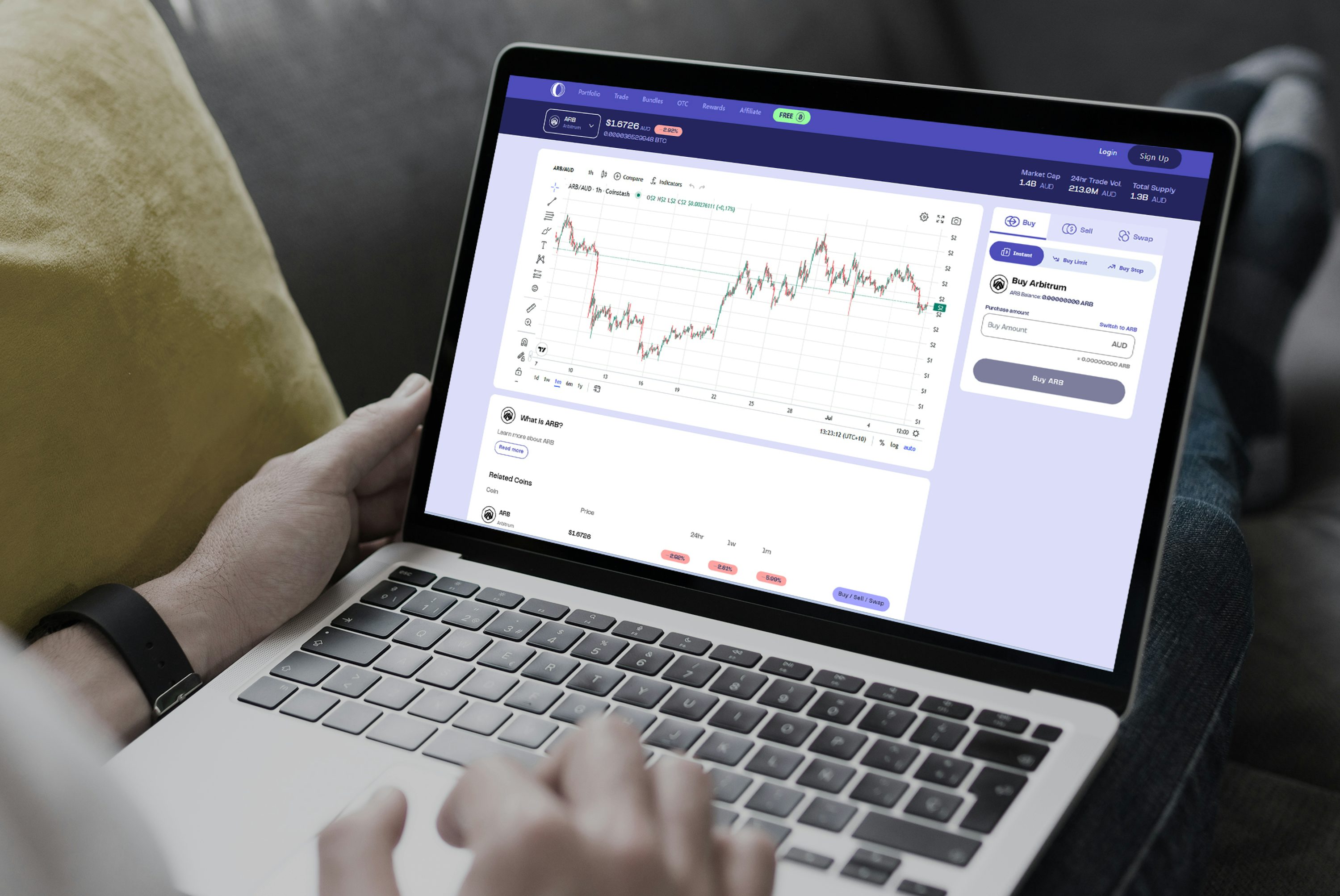11 Tips on How to Multiply Your Money With Trading
Learn how to multiply your money with trading using 11 practical tips that help you trade smarter and manage risks effectively.

Imagine you're sitting at your desk, staring at market charts and wondering how to turn your hard-earned money into more money. Trading offers a path, but the stakes are high and the risks can be daunting. Here's where Smart Money Trading comes in. It’s about making informed decisions, using strategies that go beyond guesswork. In this guide, we’ll explore how you can use Smart Money Trading principles to multiply your money through trading. Whether you're a novice or have some experience, these insights can help you unlock your trading potential and make the most of your capital.
Aqua Funded’s funded trading program offers a solution. It’s a tool to help you maximize your trading potential.
Is Trading Profitable?

Trading has the potential to be profitable, but it’s far from a guarantee. The idea is to buy and sell securities to profit from short-term price movements. But profits can vary a lot. Returns range from losses to up to 20%–30% monthly, but only for those with skill and discipline. Risk tolerance, market knowledge, patience, and capital play a significant role in consistent profitability. Most traders begin with limited income and may experience losses initially.
Day trading isn’t profitable for most; only about 10% see consistent gains due to experience and psychological control. New traders often lose because of poor risk management and unrealistic expectations. While high returns, such as 1%–2% daily, are possible, they’re rare and unsustainable in the long term. Costs such as brokerage fees, slippage, and emotional mistakes can erode profits.
What Affects Your Trading Success?
Several factors influence how profitable you can be with trading. Experience matters a lot. Beginners usually lose money at first. Only those with years of learning and proper training see consistent profits. Strategy and discipline are crucial, too. You need a tested plan, whether it relies on technical analysis, patterns, or indicators. Sticking to the plan, setting stop-losses, and managing emotions are what separate profitable traders from the rest. Capital is another factor. If you have more money to invest, you can scale small, consistent gains into something more substantial. The time you invest is also significant. Day trading can be a full-time job, while swing or positional trading offers more flexibility but fewer opportunities for profit. Costs and fees also impact profitability. Brokerage fees, taxes, and slippage can hinder high-frequency or day trading.
The Risks and Challenges of Trading
Trading isn’t just about the numbers; it’s a mental game, too. Emotional stress from greed, fear, or FOMO can lead to poor decisions. High leverage can amplify both gains and losses. Markets can behave irrationally, and even the most effective strategies can fail during unexpected events. Losses are part of the game, and even top traders lose trades frequently but win more over time.
What Are Realistic Profit Expectations?
For beginners, expect losses or small gains as you learn. Skilled traders with a strategy, discipline, and capital may earn 10%–30% annually. Highly experienced or full-time professionals can potentially earn 1%–5% per month, depending on the risk.
Is Trading Profitable?
Yes, trading can be profitable, but it’s challenging and comes with significant risk. To make consistent profits, you must treat trading as a skill-based business, not a shortcut to wealth. You need solid education, risk control, realistic expectations, and continuous improvement. Be ready for months or even years of learning before you become consistently profitable.
11 Tips on How to Multiply Your Money With Trading

1. Trade with Zero Risk Using Aqua Funded Accounts
Consider leveraging your trading expertise without putting your own money at risk. AquaFunded offers this opportunity with access to trading accounts of up to $ 400,000. Enjoy flexible trading conditions, including no time constraints and realistic profit targets. AquaFunded has already helped over 42,000 traders earn more than $2.9 million, backed by a 48-hour payment guarantee. You can start trading instantly or show your skills with customizable challenges, keeping up to 100% of your earnings.
2. Master the Basics Before Jumping In
Before you start, it’s crucial to grasp how markets function. This includes understanding supply and demand, economic indicators, and the effects of news and sentiment. Educate yourself on reading stock charts, financial news, and earnings reports to make informed decisions. Dive into macroeconomic factors like interest rates, inflation, and GDP. Use educational tools like books and simulation apps to build your foundation.
3. Craft a Solid Trading Strategy
Having a clear strategy ensures you make decisions based on data, not emotion. Choose your trading style: day trading for quick moves, swing trading for short-term holds, or position trading for long-term trends. Backtest your approach using historical data and adhere to your entry, exit, and stop-loss rules. Keeping a trading journal helps you learn from past trades.
4. Prioritize Smart Risk Management
Even the best traders face losses. Risk management protects your capital and keeps you in the game. Never risk more than 1%–2% of your capital on a single trade. Use stop-loss orders to limit losses and diversify across sectors and asset types. Avoid high leverage unless you fully understand its risks.
5. Utilize Both Technical and Fundamental Analysis
These methods help you spot trading opportunities and avoid pitfalls. Technical analysis involves using indicators like moving averages, RSI, MACD, and chart patterns. Fundamental analysis focuses on a company’s financials, such as revenue, earnings, and P/E ratio, if trading stocks. Combining both techniques can lead to high-conviction trades.
6. Start Small and Gradually Scale Up
Starting small allows you to test your skills with minimal risk while building confidence. Begin with paper trading or a small amount of capital. Focus on consistency over high profits initially. Increase your trade size gradually as your win rate and confidence grow.
7. Keep Emotions in Check
Emotional trades can lead to overtrading, chasing losses, and missed exit opportunities. Stick to your plan and accept that losses are part of the process. Take regular breaks and evaluate trades objectively. Use journaling to identify emotional triggers.
8. Think Long-Term: The Power of Compounding
Consistent trading profits compound over time, leading to wealth multiplication. Reinvest your profits instead of withdrawing early. Track your monthly and yearly ROI, not just daily gains. Aim for consistent positive returns rather than hitting home runs.
9. Minimize Trading Costs
High fees, spreads, and taxes can eat into profits. Choose brokers with low fees and tight spreads. Avoid overtrading since each trade incurs a cost. Be mindful of tax implications on capital gains.
10. Stay Informed and Keep Learning
Markets are constantly changing. Stay informed about financial news, central bank policies, and geopolitical developments. Join trading communities or forums, read books, and attend webinars. Review and refine your strategy regularly.
11. Automate and Simplify When Possible
Automation reduces errors and frees up your time. Use trading platforms with alerts and automatic orders. Consider using robo-advisors or algorithmic trading bots if you’re tech-savvy. Keep strategies simple, as they often perform best.
Related Reading
- How Much Money Do You Need to Start Trading
- How Long Does It Take to Learn Trading
- What Challenges Do Traders Face?
- Futures vs Stocks Trading
- Why is Trading So Hard
- How to Swing Trade
- How to Start Trading With No Money
5 Trading Strategies for Making Money

1. Profit from Rising Markets: Long Call Strategy
A long call option is about betting on a stock's price increase. You buy a call option expecting the stock price to rise above the strike price before the option expires. For example, if Stock X is at $20, you buy a call with a $20 strike price for $1 per share, totaling $100 for the contract.
You break even when the stock hits $21, and beyond that, your profits grow. The upside? Unlimited potential for gains if the stock keeps climbing. The risk? You could lose your initial $100 investment if the stock doesn’t rise. Use this strategy when you’re confident about a significant upward move.
2. Generate Income with Limited Risk: Covered Call Strategy
The covered call strategy involves selling a call option while owning the underlying stock, making it a safer choice for generating income. For Stock X at $20, you own 100 shares and sell a call option for $1 per share, pocketing a $100 premium. You break even at $19, and your gains cap at $100 if the stock rises above $20. This strategy is ideal if you own the stock and don’t expect a big price jump. It’s especially popular among older investors and those with tax-advantaged accounts.
3. Hedge Against Falling Markets: Long Put Strategy
A long put is your go-to when you anticipate a stock price drop. You buy a put option, hoping the stock falls below the strike price. For instance, Stock X is currently at $20, and you buy a put for $1 per share, which costs $100. You break even at $19, and profits grow as the stock falls further. The risk is losing your $100 investment if the stock doesn’t drop. This strategy is safer than shorting a stock and offers significant profit potential. Use it when you expect a substantial decline.
4. Earn Premiums with Confidence: Short Put Strategy
With a short put, you sell a put option, betting the stock stays above the strike price. For Stock X at $20, you sell a put for $1 per share, gaining a $100 premium. You break even at $19, earning the whole premium if the stock stays above $20. The downside is a potential $1,900 loss if the stock crashes to zero. This strategy suits those who are confident that the stock will maintain its value and is a good fit for long-term investors willing to buy the stock if its price drops.
5. Protect Your Gains: Married Put Strategy
The married put strategy is like buying insurance for your stock. You own the stock and buy a put option to hedge against a price drop. For Stock X at $20, you buy 100 shares and a put for $1 per share, costing $100. You break even at $21, with unlimited profit potential if the stock rises. The risk is limited to the $100 premium. Use this strategy when you believe a stock will increase but want protection against a significant drop. It’s ideal for situations where news or events could swing the stock price.
Related Reading
- What Happens if You Blow a Funded Account
- How to Become a Professional Trader
- Best Market to Trade for Beginners
- Tips for Day Trading
- Common Trading Mistakes
- Margin vs Leverage
- How Much Can You Make Day Trading With 100k
- Scalping Trading Strategy
- Margin vs Leverage
- Day Trading vs Options
- Best Time Frame for Day Trading
Benefits of Trading

Diversification: A Key to Smoother Returns
Trading stocks offers the advantage of diversification. By spreading investments across a variety of companies in different industries and regions, traders can mitigate risk related to market volatility. This approach helps avoid relying too heavily on a single stock or sector. For instance, while growth stocks often perform well during economic booms, they tend to struggle during economic downturns. Meanwhile, consumer staples like food and household items tend to remain stable. Mixing these can help steady your portfolio during turbulent times.
Flexibility in Strategies: Tailor Your Approach
Stock trading provides a wide range of strategies to suit different goals and risk levels. Whether you seek quick returns with day trading, steady growth through long-term investments, or a middle ground with swing trading, there’s a strategy to fit your needs. This flexibility is one reason why stock trading is so popular.
Liquidity and Accessibility: Trade on Your Terms
Stocks are highly liquid assets, allowing you to sell and convert them to cash quickly. This liquidity offers the flexibility to enter and exit positions swiftly. Furthermore, online platforms make trading more accessible than ever, allowing investors to trade from anywhere and respond quickly to news and developments.
Exposure to International Markets: Broaden Your Horizons
Trading stocks is an effective way to engage in global economies. Instead of being limited to local companies, traders can buy and sell stocks from around the world, including those in more robust economies. This geographical diversification can help hedge risks and uncover opportunities in lesser-known stocks.
Looking to multiply your money through trading? Check out AquaFunded’s funded trading program, where you can turn your trading skills into substantial profits without risking your capital. Access accounts up to $400K with flexible trading conditions, no time limits, and up to 100% profit split. Join over 42,000 traders worldwide who've already collected more than $2.9 million in rewards. Start trading today with instant funding options or take on our customizable challenge paths.
Join Our Funded Trading Program Today - Trade with our Capital and Keep up to 100% of the Profit.

Consider trading without the stress of risking your own money. AquaFunded gives you this opportunity by providing access to accounts up to $400,000. Whether you’re a seasoned trader or just starting out, this platform offers flexible conditions like no time limits and easy-to-hit profit targets. Why should you care? Because you can keep up to 100% of what you earn. It’s a win-win situation: hone your skills and multiply your money without putting your savings on the line.
Instant Rewards with AquaFunded
Who wouldn’t want to get paid quickly? AquaFunded offers a 48-hour payment guarantee, ensuring you receive your hard-earned profits promptly. Their traders have already collected more than $2.9 million in rewards. The best part? You can start earning immediately with their instant funding options. This means you can dive straight into trading and see real results without waiting around for approvals or complicated processes.
Flexible Pathways to Success
Not ready to dive in headfirst? AquaFunded offers customizable challenge paths to prove your trading skills. These challenges allow you to demonstrate your prowess in a controlled environment before accessing larger accounts. It’s a great way to test your strategies and gain confidence. Once you prove your skills, you can keep up to 100% of your profits. This flexibility means you can choose a path that suits your style and goals, making AquaFunded a versatile option for traders at all levels.
Join a Thriving Community
Trading doesn’t have to be a solitary pursuit. Over 42,000 traders worldwide have already joined AquaFunded, creating a vibrant community of like-minded individuals. This network offers support, insights, and opportunities to learn from others’ experiences. Being part of such a large group means you’re not alone in your trading journey. You can connect with others, share ideas, and grow together, making your trading experience more enriching and enjoyable.
Related Reading
- Why Do Most Day Traders Fail
- Is Day Trading Profitable
- How to Take Profits in Trading
- Fair Value Gap Trading
- Best Time of Day to Trade Stocks
- How to Make Money Online Trading
- Prop Firms With No Time Limit
- Different Stock Trading Strategies
- Swing Trading Prop Firms
- Best Technical Indicators for Day Trading


